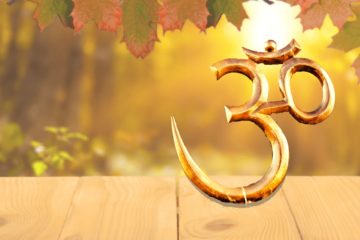内容概要
什么是瑜伽?
瑜伽意味着联合。从词源上讲,它与英语单词yoke相关。瑜伽意味着与上帝的结合,或者意味着小我自我与神圣自我,无限精神的结合。
瑜伽主要是一门精神学科。瑜伽是一千年的古老科学。它考虑到了身心之间的相互影响,并使它们相互和谐。例如,很多时候,头脑不能仅仅因为身体紧张或疾病而专心,这会阻止能量流向大脑。同样,由于意志被挫败或因有害情绪而瘫痪,体内的能量也常常被削弱。
瑜伽主要通过pranayama科学或能量控制作用于体内的能量。 Prana的意思也是“呼吸”。瑜伽教您如何通过呼吸控制来保持思想并达到更高的意识状态。
呼吸就是生命。调息法(控制瑜伽中生命力的方法)是 特定的呼吸技术,可增加氧气的摄入量,并鼓励呼吸道吸收到人体微妙的能量通道(nadis)和能量中心(脉轮)中。呼吸法是瑜伽中最重要的练习之一。通过练习,瑜伽士能够控制神经系统并逐渐控制思想。瑜伽士已经有数千年的历史了,如果我们控制呼吸模式,就可以控制我们的思想。
当身心不断劳累时,效率就会降低。放松是大自然的充电方式。瑜伽强调适当放松的重要性,这种放松是调节我们的能量并创造平衡感以增强我们的身心健康的一种方式。瑜伽士使用三种放松方法-身体,精神和精神。
以季节性,当地和有机水果,蔬菜,谷物,坚果,种子,豆类和奶制品为基础的简单自然饮食可以优化身心健康,并促进与周围世界的和谐。瑜伽士知道食物对心灵有微妙的影响。饮食充沛,纯净温和的饮食是身心健康的最佳保证,可为身心带来和谐与活力。
我们的思想定义了我们是谁。瑜伽告诉我们,每一个想法都会对我们个人以及我们周围的世界产生影响。乐观的眼光和专注的能力会产生振奋人心的振动,并带来健康,和平与快乐的生活。瑜伽告诉我们,我们的思想是我们成功和生活幸福的真正原因。一旦我们掌握了积极思考的艺术,我们就会感到快乐,和谐与和平,而我们领悟更高的真理以及维持有力的冥想练习的能力将随之而来。
瑜伽的四大途径
瑜伽的4条路径基本上是使个人具有不同的个性以达到瑜伽的最终目标的4种不同方法。瑜伽的所有4条路径并不代表彼此独立的目标。尽管练习每条路径的旅程是不同的,但瑜伽的4条路径的最终目标是与至尊灵魂相结合。这种结合将我们引向Sat Chit Ananda,只有通过一贯的瑜伽练习才能实现。
1.因果瑜伽
Karma Yoga – the Yoga of action – is the path chosen primarily by those of an outgoing nature. It purifies the heart by teaching you to act selflessly, without thought of gain or reward. By detaching yourself from the fruits of your actions and offering them up to God, you learn to sublimate the ego.
业力瑜伽的真正含义是与我们所做工作的结合。当我们真正地与业力团结在一起时,我们就不再有结局愿望,因为我们只是成为了业力。
2.巴克提瑜伽
Bhakti Yoga is the path of devotion, which appeals particularly to those of an emotional nature. The Bhakti Yogis are motivated chiefly by the power of Love and sees God as the embodiment of Love.
Through prayer, worship and ritual, he surrenders himself to God, channeling and transmuting his emotions into unconditional love or devotion. Chanting or singing the praises of God form a substantial part of Bhakti Yoga.
3.拉贾瑜伽
Raja Yoga and Hatha Yoga is the science of physical and mental control. It offers a comprehensive method for controlling the waves of thought by tuning our mental and physical energy into spiritual energy. Raja yoga is the source of many styles of yoga we practice today. Another name for Raja Yoga is ‘Yoga of mind’ because most of the practices of it focused on seeker’s state of mind.
4.娜娜瑜伽
Jnana Yoga – the Yoga of Knowledge and wisdom – is the most difficult path, requiring tremendous strength of will and of intellect. Taking the philosophy of Vedanta, the Jnana Yogi uses his intellect to enquire into his own nature, dissolving the veils of ignorance and illusion.
在练习Jnana瑜伽之前,有抱负的人必须整合其他瑜伽路径的课程–因为没有无私的奉献和对上帝的爱,以及没有身心的强健,对自我实现的追求可能仅仅是spec测。
ASHTANGA瑜伽–八肢
帕坦加利的核心 瑜伽经 is an eight-limbed path that forms the structural framework for yoga practice. Upon practicing all eight limbs of the path it becomes self-evident that no one element is elevated over another in a hierarchical order. In brief, the 8 limbs of yoga are as follows:
1.亚马斯
- Ahimsa – non violence, non injury. Vegetarianism is part of the practice of ahimsa. The great Indian saint Gandhi is famous for the practice of ahimsa
- 萨蒂亚:诚实,不说谎。
- Brahmacharya:贞操,性能力的升华。
- Asteya:不偷窃,不贪婪,不嫉妒。
- Aparigraha:不接受礼物或贿赂。
2. Niyamas
- Saucha:纯度(外部和内部)。
- Santosha:知足。
- 西班牙小吃:紧缩政策。
- Swadhyaya:研究宗教经文。
- Ishwara Pranidhana:敬拜耶和华,投降自我。
3.体式
For spiritual pursuit, as for any other pursuit in life, a healthy and strong system is essential. A steady mind presupposes a steady body.
4.气息山
控制生命能量
5. Pratyahara
从物体撤回感官
6.达拉那
将思想集中在外部对象或内部思想上,而排除所有其他思想。
7.禅宗
冥想被定义为不间断的思想流向上帝,而排除了其他感官知觉。
8萨玛迪
这是超意识状态。
Note that the Yamas and Niyamas constitute the ethical foundation of the Yoga practice, straighten out the mind, and help reduce agitations and restlessness. Asana, Pranayama and Pratyahara are external practices, while Dharana, Dhyana and Samadhi are considered advanced internal practices.
即使在实践中有了进步的想法,也不必在专注和冥想之前就等待道德上的完善。实际上,所有阶段都是一起参与的。例如,如果一个人没有良好的姿势并且拥有一定的呼吸平静,就无法冥想,从而在排除其他所有事物时获得内在的专注。




[…] Understanding about yoga […]
[…] Understanding about yoga […]
[…] Understanding about yoga […]
[…] Understanding about yoga […]
[…] Understanding about yoga […]
[…] Understanding about yoga […]
[…] Understanding about yoga […]
[…] Understanding about yoga […]
[…] Understanding about yoga […]
[…] Understanding about yoga […]
[…] Understanding about yoga […]
[…] Understanding about yoga […]
[…] Understanding about yoga […]
[…] Understanding about yoga […]
[…] Understanding about yoga […]
[…] Understanding about yoga […]
[…] Understanding about yoga […]
[…] Understanding about yoga […]
[…] Understanding about yoga […]
[…] Understanding about yoga […]
[…] Understanding about yoga […]
[…] Understanding about yoga […]
[…] Understanding about yoga […]
[…] Understanding about yoga […]
[…] Understanding about yoga […]
[…] Understanding about yoga […]
[…] Understanding about yoga […]
[…] Understanding about yoga […]
[…] Understanding about yoga […]
[…] Understanding about yoga […]